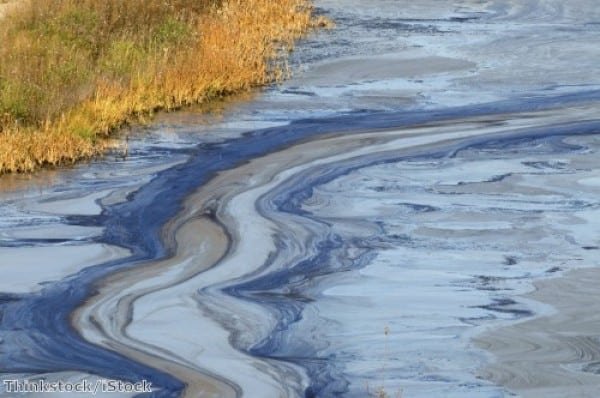Throughout history, Civilizations have grown around the presence of water. The existence of water makes the planet’s ecosystem special. Every being on the Earth needs water to survive. However, treatment has been unfair for this invaluable resource. Bad industrial practices & loose regulations significantly harm available water with toxins and unhealthy elements. As per UNICEF, water-related diseases result in the deaths of 6000 children every single day. Similarly, these toxins cause significant harm to aquatic lives. Hence, it is about time technology addresses this challenge by detecting chemical leakage into rivers and water supplies.
How Detecting Chemical Leakage Can Save The Ecosystem?
Leakage of industrial chemicals, oils, and other pollutants alters some properties of water. Monitoring those water properties can help identify if the water is contaminated. Those parameters can help detect chemical leakage in rivers. These sensor-based systems can be installed at several nodes in the river to monitor chemical leakage in any part of the river continuously. As a result, this system can act as the first line of defense against any chemical leakage. A leakage detection system would identify any contamination and raise the alarm with the help of internet connectivity. Thus, authorities can take necessary actions upon receiving any such alarms to contain the effects of leakage.
Which Parameters Are Useful In Detecting Chemical Leakage?
There are some significant parameters that are useful to monitor water contamination. List of these parameters include:
- Extreme pH values:
Extreme pH represents chemical spills into rivers, resulting in alteration in standard levels of acidity. Therefore, it is one of the crucial parameters to monitor rivers.
- Dissolved Oxygen:
Dissolved Oxygen into water is generated from the environment and aquatic plants. It can harm marine lives if the dissolved oxygen goes below the standard level because of leaks.
- Transparency:
Chemical contamination, oil leaks, or sewage waste indeed affects water turbidity. Therefore, turbidity alteration would clearly imply any alteration into the river water.
- Temperature variations:
Sudden temperature variations can directly represent that river water is in contact with some external substance or some pollutants. As such, temperature monitoring can be a simple & useful parameter to monitor.
- Conductivity:
Any contamination in water reflects a change in water conductivity. Therefore, measuring conductivity at intervals can be the key to identify the presence of any chemicals in the river.
- Oxidation-reduction potential (ORP):
The oxidation-reduction potential is an indication of a river’s capability to clean itself. Higher ORP means higher oxygen in the water. Therefore, bacterias can work effectively to decompose any contaminants.
- Presence of dissolved ions:
The presence of dissolved ions is another indication that some external matter or chemical has come in contact with river water.
These are not the only parameters to identify if there is any containment in the water. All of the water quality measurements can contribute to identifying chemical exposure in a way.
Needs Of Technical Infrastructure To Detect Chemical Leakage
Identifying chemical leakage is trickier than regular monitoring of water quality in contained tanks. Conditions of the river and the need to monitor an extended area introduce a lot of challenges. Monitoring chemical leakage in rivers requires lots of sensors, which can not only sustain environmental conditions but can also be self-sustaining. Therefore, these devices need to be robust, connected, low-cost, low-power, and require minimum calibration. The complete architecture for chemical leakage monitoring has to run autonomously, with minimum calibration. It is a severe challenge to support such a complex & inaccessible system with human interaction.
Conclusion
Building a robust clean water platform is a monumental step towards using technology to create a better ecosystem. Clean resources such as water and air will be an essential objective for most future smart city applications. A handful of sensors, internet connectivity, and a monitoring dashboard will provide complete insight into water quality. As a result, detecting chemical leakage can help save aquatic lives, human lives as well as freshwater.
There are several ways to clean different types of chemical pollution from rivers. These methods include Air stripping, Activated Carbon filtration, Bioremediation, Phytoremediation, and Chemical oxidation. Monitoring water quality empowers authorities to manage different water contaminants. As a result, smart cities can address contamination from all possible sources such as industrial, agricultural, municipal, or sewage management failure. Technology will allow the future to thrive by creating a healthier environment. To summarize, smart city initiatives and the growth of IoT applications can make a generational contribution.
Develop great IoT solutions with high quality software, devices and infrastructures. Contact us!


